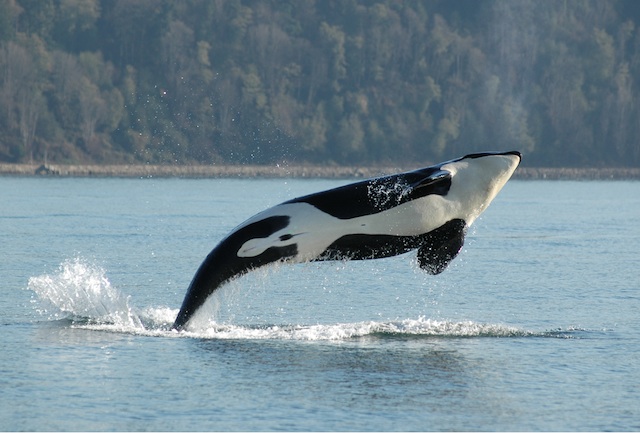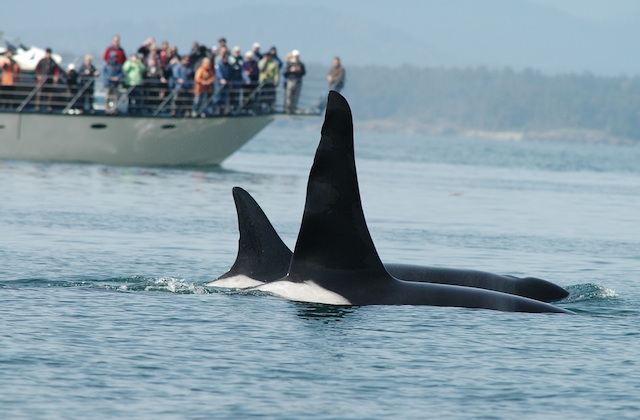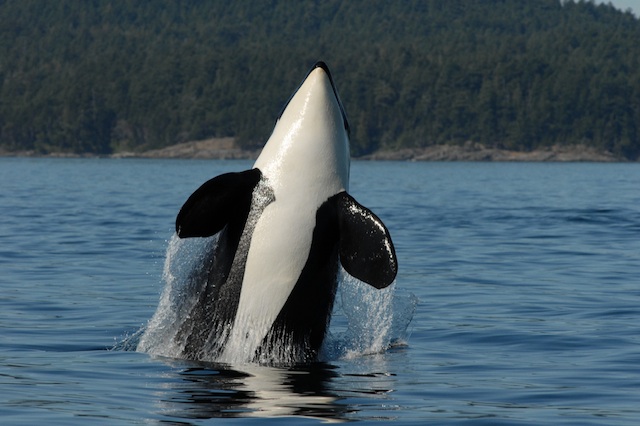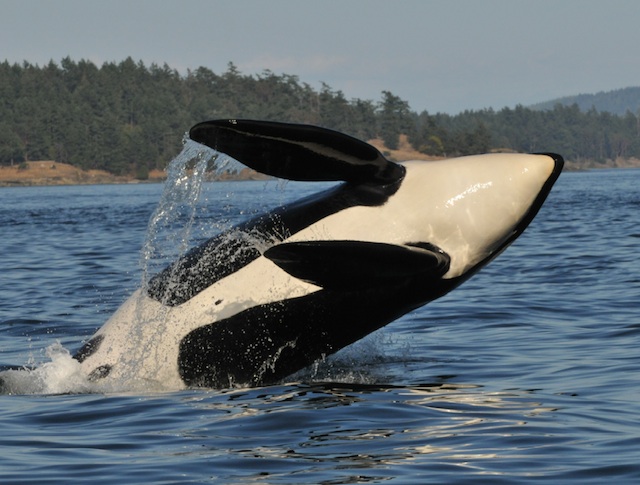
|
|
 |
||||||||||||||||||||
|
|
|||||||||||||||||||||
|
CENTER FOR WHALE RESEARCH Helping ‘Killer Whales’ Survive in the Pacific Northwest By Katey Pfeil Affecting positive change isn’t always easy. In most cases, it takes a great deal of time, effort and patience in order to inspire a new way of thinking and behaving. The Center for Whale Research (CWR) knows a thing or two about patience, hard work, and, after nearly three decades of dedicated study, a lot about whales. The organization, which has shied away from becoming too powerful and political, maintains a grass-roots type of construction and a very humble but driven philosophy that centers on conservation efforts directed at the orcas of the Pacific Northwest.  Orcas, more commonly known as killer whales, are kings of the deep; but they’re not as indestructible as we might imagine. After years of being hunted ruthlessly for their blubber, the orca population is at an all-time low. Liberal estimates claim there are only about 40,000 left in the world’s oceans—enough to classify it as an endangered species in the US and Canada. Orcas, more commonly known as killer whales, are kings of the deep; but they’re not as indestructible as we might imagine. After years of being hunted ruthlessly for their blubber, the orca population is at an all-time low. Liberal estimates claim there are only about 40,000 left in the world’s oceans—enough to classify it as an endangered species in the US and Canada. Today, the main threat to their population is prey depletion, especially as the salmon in the US becomes more and more threatened as a result of over-fishing and human river development. The key to the orca’s preservation lies in learning about and educating the public on their importance in our eco-system. CWR was formed in 1976 with this in mind, and came about from a study titled “Orca Survey,” spearheaded by researcher Kenneth Balcomb (who famously discovered that Navy sonar was responsible for whales beaching themselves).  Its original purpose was to formulate a census on all of the orcas in the San Juan Island area of the Pacific Northwest by photo-identification. Once the research project ended, Balcomb officially created the CWR in 1985, which continues the “Orca Survey” to this day. Its original purpose was to formulate a census on all of the orcas in the San Juan Island area of the Pacific Northwest by photo-identification. Once the research project ended, Balcomb officially created the CWR in 1985, which continues the “Orca Survey” to this day.Having graduated from the University of California in 1963 with a bachelor’s degree in zoology, Balcomb has had a fascination for animals as long as he can remember. After graduation, he was hired by the U.S. Fish and Wildlife Service to be a field biologist in a whale-marking program. Between expeditions in 1964 and 1965, he attended graduate school at UC Davis for zoology and worked as a biological technician at the Richmond, California whaling stations, collecting data and materials from harvested whales for the National Marine Mammal Laboratory in Seattle. Balcomb’s mostly volunteer team is stationed in Friday Harbor, and operates as a small scale organization. CWR’s mission (according to their website) is to “develop, promote, and conduct benign studies of free-swimming cetaceans for the purpose of conserving their populations and informing governments and the public of their ecosystem needs.” And as I learned from speaking with Erin Heydenrich (a senior staffer who has been with CWR for 8 years), there is no “usual” day at the office. If weather conditions permit, researchers are out in the boat checking on the whales.  The objective is to learn as much about the whales’ community as possible. This includes their social structure, diet, breeding patterns, and so forth. The team’s expert knowledge is useful because it can be used to influence public opinion concerning the whales, or even enact political change. The objective is to learn as much about the whales’ community as possible. This includes their social structure, diet, breeding patterns, and so forth. The team’s expert knowledge is useful because it can be used to influence public opinion concerning the whales, or even enact political change. “We literally know every individual whale and the majority of the relationships between individuals in our region; this gives us a unique ability to conduct population monitoring and demographic studies. It also allows us to provide the most detailed information possible to management organizations like National Marine Fisheries Service to implement conservation regulations,” says Heydenrich. “Most of what we know today about killer whale biology, social structure and life history comes from the pioneering study initiated in part by Ken. We use benign methods for studying the whales  such as photo ID and highly-trained staff that can identify individual whales on sight.” such as photo ID and highly-trained staff that can identify individual whales on sight.” This summer, the organization’s goal is to encourage the public to get involved and learn more about the orca. CWR is launching a new education program at Lime Kiln State Park located on San Juan Island, which receives more than 200,000 visitors annually. The park is known locally as the “whale watch park” because the resident pods frequently pass very close to shore there. CWR hopes the program will reach a  greater audience with their message that whales - and their environment - is worth conserving. “We hope that by people learning about the whales, that they will appreciate them more and consider conservation as a necessary action,” says Heyenrich. “Our immediate goals are to generate publicity which can spur the necessary support for reducing the damaging activities of humans.” greater audience with their message that whales - and their environment - is worth conserving. “We hope that by people learning about the whales, that they will appreciate them more and consider conservation as a necessary action,” says Heyenrich. “Our immediate goals are to generate publicity which can spur the necessary support for reducing the damaging activities of humans.” FAST FACTS The Center for Whale Research P.O. Box 1577
Friday Harbor, WA 98250 www.whaleresearch.com The Whale Research Center is a non-profit [IRS 501(c)(3)] organization. CWR funding comes from government contracts, other non-profit organizations, and donations. To learn more their efforts (or to make a donation), please visit: www.whaleresearch.com. Photos courtesy of The Center for Whale Research |
|
|
|
|
| Site Map |